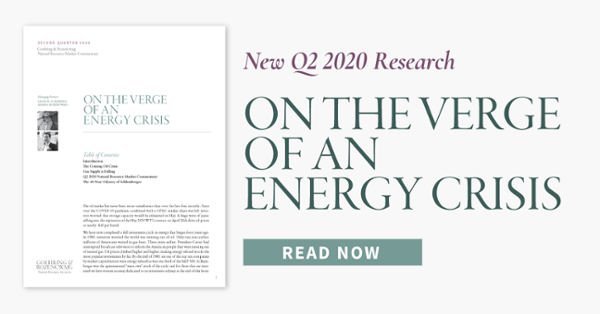“Over the past decade, there has been a chronic bias in the IEA estimates for non-OECD demand, and we believe this time is no different. Our models suggest that emerging market oil demand has held up much better than widely appreciated.”
The impact of the coronavirus on global oil demand was drastically less than originally feared. Many oil analysts expected quarantines and travel bans to impact demand by as much as 30 mm b/d during the second quarter. Instead, our models suggest that the impact on demand was nearly 70% less and instead of falling by 30 mm b/d only fell by 10 mm b/d during the quarter.
The difference between our estimates and the consensus opinion once again revolves around the so-called “missing barrels,” which have reemerged as a key issue over the past few months. In May, the IEA released its monthly Oil Market Report in which it estimated second quarter demand would fall by 20 m b/d year-on-year to 79.3 m b/d. Such a drop would be consistent with a single-month drop of 30 mm b/d year-on-year for May – the prevailing bear case at the time.
As the quarter progressed, however, it became clear that OECD inventories were not building as expected. According to the IEA’s figures, OECD inventories should have grown by 645 million barrels in April. Instead, they only built by 145 million barrels, resulting in a massive 500 million “missing” barrels.
Similarly, May OECD inventories should have built by 6.5 mm b/d or 200 mm bbl total. Instead, inventories built by less than half that amount.
Long time readers of our letters know that we believe “missing barrels” reflect understated demand. Over the past decade, there has been a chronic bias in the IEA estimates for non-OECD demand, and we believe this time is no different. Our models suggest that emerging market oil demand has held up much better than widely appreciated.
Emerging markets have been critical to global energy markets for many years. However, it is helpful to think back to a period before their ascendency to understand how much things have changed. In the late 1970s high prices and weak economic conditions led to a 10% drop in oil demand between 1979 and 1982. The developed world made up two-thirds of all oil demand and fell 15% while the emerging markets made up the remaining one-third and grew slightly. The developing world was clearly the growth engine, but it only represented a small fraction of total demand. As a result, it took a decade before global oil demand surpassed its old 1979 high.
Conditions during the Global Financial Crisis were radically different. By 2007 half of global oil demand was coming from the emerging markets. Despite a ten-fold increase in oil prices and the worst financial panic since the Depression, global demand only fell by 2% from 2007 to 2009. Instead of taking a decade to recover, demand surpassed the old highs within 18 months. One decade later, global oil demand is now 15% higher than in 2007. The growth engine for global oil demand (the emerging markets) had become considerably bigger.
Last year, emerging markets exceeded 60% of global oil demand – an all-time high. It is no surprise that global demand is therefore coming in much stronger than expected during this downturn as well.
Adjusting for the “missing barrels,” we believe second quarter demand fell by 10 m b/d to average 89.5 mb/d. The IEA expects demand to rebound to within 4 mm b/d of normal by the end of the year, but this figure is likely dramatically understated as welI. Instead, we believe fourth quarter demand will be within 1 mm b/d of normal and could exceed 100 mm b/d. For 2021, our models suggest demand will average at least 100 mm b/d – nearly 2.5 mm b/d higher than the IEA is currently projecting.
Consensus opinion believes it will take until the end of 2021 for demand to reach normal pre-coronavirus levels. We would argue we are much closer to normal levels to begin with and demand will soon exceed prior highs.
Interested in reading more on this topic? Download our Q2 2020 Research,
On the Verge of an Energy Crisis, where we explore this subject and many others.


